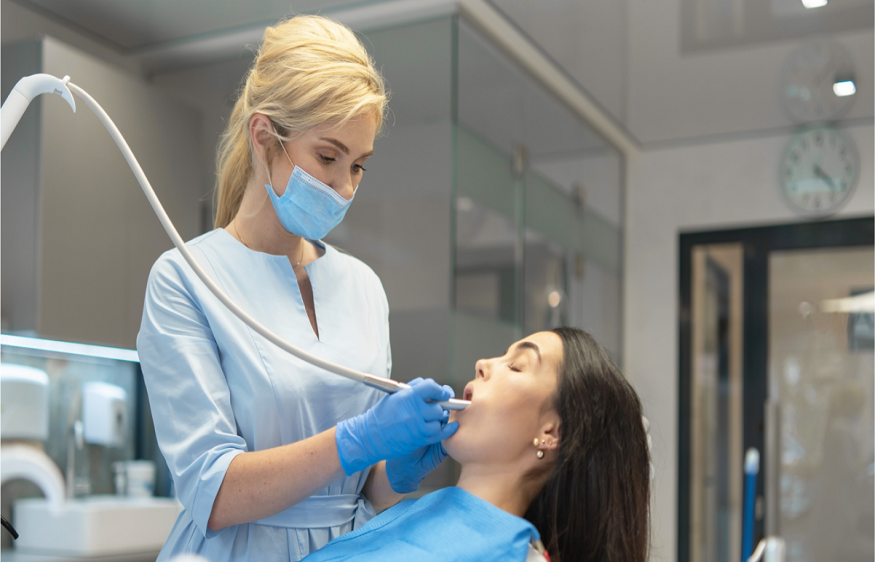Saliva is the mouth’s first line of defense against oral infections. It contains enzymes that counteract the acids that plaque-forming bacteria release, which can cause cavities. Additionally, saliva restores vital minerals to tooth enamel, aiding in the remineralization process.
Saliva is undoubtedly crucial in food digestion, as it breaks down the starch in the mouth. This is because of the enzyme found in Saliva, Amylase. Removing any food particles or detritus from the mouth will facilitate smooth digestion and reduce the risk of dental problems. Let us explore this blog to learn the role of saliva analysis, as explained by the dentist in Poway, CA.
The All-Inclusive Diagnostic Capability of Saliva
Saliva is a mirror reflecting the state of the body’s health and is more than just a digestive fluid. A human’s saliva provides a real-time image of the person’s oral and overall health, including several biochemicals such as enzymes, hormones, antibodies, and microorganisms. The right analysis also includes some important information like hormonal fluctuations, mouth infections, systemic illness, and even reactions from stress.
- Additionally, saliva cleans teeth and gums of food particles and detritus.
- Aids in the breakdown and moistening of food to facilitate swallowing and improve flavor perception.
- Distribute antimicrobial agents throughout your mouth to help stave against infections and cavities.
- It provides high concentrations of calcium, fluoride, and phosphate ions at the tooth surface, which helps maintain the strength of your teeth’s surface.
Saliva-Based Diagnostics Mechanisms
Saliva can be a diagnostic tool because its composition varies depending on the ailment. For example, certain pathogens can be found in saliva directly, providing information on the existence of illnesses like periodontal disease or viral diseases like HPV that are connected to oral malignancies.
Dental Caries and Saliva
Boosting saliva’s natural defense mechanisms is key to caries prevention, reducing microbiological causes, and boosting preventative dietary practices.
The pH of dental plaque determines the equilibrium between the acid demineralization of teeth and the remineralization of the original caries lesion. When acid starts building up in the plaque because of the bacteria produced after consuming fermentable carbohydrates, primarily sugars, in meals and beverages, this can ultimately lead to a decrease in plaque’s pH. Moreover, the saliva, which also includes buffer bicarbonate, can neutralize or wash away any acids, so the plaque’s pH level can also increase.
The saliva or plaque will ultimately become unsaturated with the tooth mineral when the pH starts to see a downfall critical value of about 5.5. This can also result in the decaying or erosion of the tooth enamel. Moreover, the plaque and saliva are completely supersaturated with tooth minerals when pH rises above normal. Saliva’s calcium and phosphate ions will start the remineralization process that will restore any broken mineral crystal in your enamel.
As a result, acidic environments help lower phosphate and hydroxyl ion saturation, facilitating the dissolution of the tooth mineral’s solid hydroxyapatite crystals. If saturation levels are exceeded, the chemical reaction will proceed toward remineralization, and any broken crystals will be restored by removing ions from the solution.
Saliva flow stimulation increases the volume and concentration of bicarbonate buffer, remineralizing ions and washing out acids (and sugars).
Conclusion
By providing a non-invasive, effective, and all-inclusive tool for early disease identification and monitoring, saliva diagnostics has the potential to transform oral healthcare completely. Diagnosis based on saliva can often become a mainstay in dental offices due to the development of technology. This can also help improve patient care with early intervention and personalized treatment plans. Adopting the right strategy will be a step towards the future where patients can now find accurate and easily available oral health care.
This thorough investigation of saliva as a diagnostic medium has ushered in a new era of innovation and patient care in dentistry, highlighting its critical role in improving oral health diagnostics.
